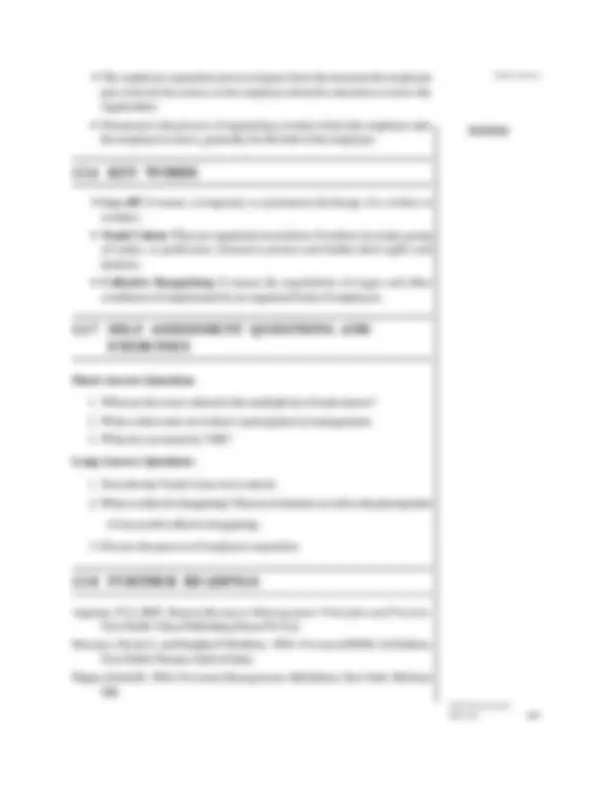



Study with the several resources on Docsity

Earn points by helping other students or get them with a premium plan


Prepare for your exams
Study with the several resources on Docsity

Earn points to download
Earn points by helping other students or get them with a premium plan
Community
Ask the community for help and clear up your study doubts
Discover the best universities in your country according to Docsity users
Free resources
Download our free guides on studying techniques, anxiety management strategies, and thesis advice from Docsity tutors
Human Resource Management (HRM) is a strategic and comprehensive approach to managing people within an organisation. It involves recruiting, hiring, training, evaluating, and rewarding employees to maximise their performance and align with the organisation’s goals. HRM also ensures compliance with labour laws, fosters a positive workplace culture, and supports employee development and well-being. By managing workforce planning, performance, compensation, and employee relations, HRM plays a vital role in organisational success. In today’s dynamic business environment, HRM is increasingly data-driven and aligned with long-term strategic planning, making it an essential function in both large corporations and small enterprises.
Typology: Lecture notes
1 / 2

This page cannot be seen from the preview
Don't miss anything!


Trade Unions
Self-Instructional 162 Material
Check Your Progress
Under the Trade Unions Act, 1926, employees (including association of employers) are registered to form trade unions for collective bargaining. The Act gives the registered trade unions certain protection and privileges. Several trade unions in one organization can result in several problems, affecting the growth and stability of both the workers and the organization. Psychologists consider participation as a mental and emotional involvement of a person in a group situation which encourages workers to share managerial responsibility. Collective bargaining is defined to cover the negotiation, administration, interpretation, application and enforcement of written agreements between employers and unions representing their employees setting forth joint understandings as to policies and procedures governing wages, rates of pay, hours of work and other conditions of employment. Employee separation is a process which ensures that an employee who is leaving the organization makes his exit in a structured and systematic manner.
Self-Instructional Material 163
The employee separation process begins from the moment the employee^ Trade Unions puts forward his notice to the employer about his intention to leave the organization. Dismissal is the process of separating a worker where the employer asks the employee to leave, generally for the fault of the employee.
Lay-off: It means a temporary or permanent discharge of a worker or workers. Trade Unions: They are organized association of workers in a trade, group of trades, or profession, formed to protect and further their rights and interests. Collective Bargaining: It means the negotiation of wages and other conditions of employment by an organized body of employees.
Short-Answer Questions
Long-Answer Questions
Aquinas, P. G. 2005. Human Resources Management: Principles and Practice. New Delhi: Vikas Publishing House Pvt Ltd.
Decenco, David A. and Stephen P. Robbins. 1989. Personnel/HRM, 3rd Edition. New Delhi: Prentice-Hall of India.
Flippo, Edwin B. 1984. Personnel Management , 4th Edition. New York: McGraw Hill.